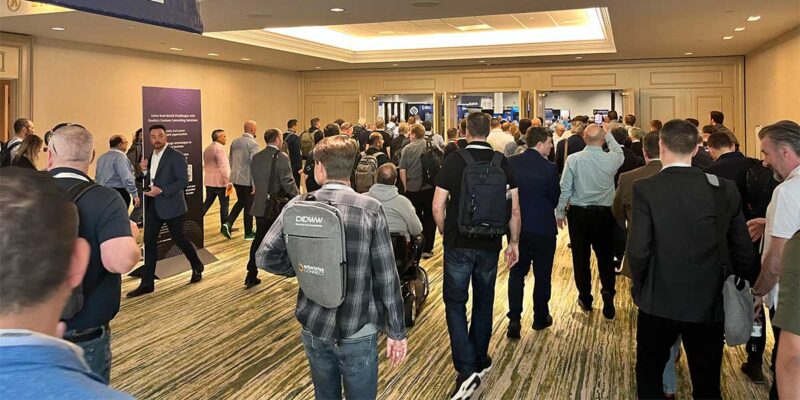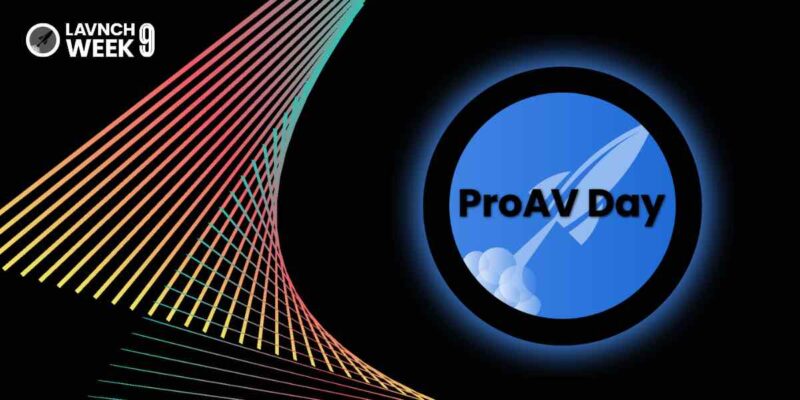Joe Way Presents From Doom to Zoom — Blog Version of the LAVNCH WEEK Keynote
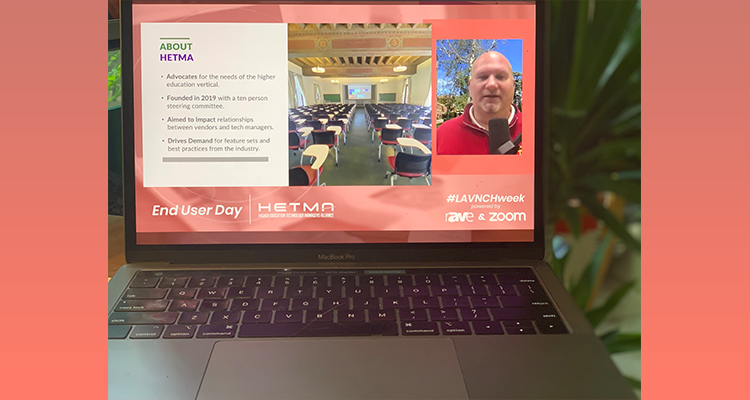
We’ve made it, everybody! The last day of LAVNCH WEEK arrived — and it left just as quickly. Our team is tired but proud — we created something brand new and released it much quicker than initially planned. LAVNCH is the industry’s first all-digital event we put on with Zoom and our other partners last week — May 1 was End User Day. We’ve been saying all along while putting this event together, “Hey. This isn’t just for integrators.” And then we proved it.
We invited Joe Way, co-founder of the Higher Education Technology Managers Alliance and director of learning environments at the University of Southern California, to deliver the keynote. Way offered his insight on how the past 60 days truly changed the process for end users’ design and install priorities forever, with his topic “From Doom to Zoom.”
He started by giving some context on the background of his work with USC.
“Its goal is to create a highly available and intuitive teaching and learning educational technology experience for the campus community through sustainable, accessible and safe, user-centered environments.”
The Six Days That Changed Everything
It’s no secret that the COVID-19 pandemic started changing the world in February. Still, Way offered that it was really March 6 that began what changed most (in the intersection of AV end users and education) lives forever.
Here’s his timeline:
- March 6, 2020 — University of Washington moved all classes online for the rest of the semester.
- March 7, 2020 — USC announced a test for online classes, scheduled for the following week.
- March 10, 2020 — The test was scrapped, news over the weekend had escalated, and the entire semester was scheduled to move online beginning March 11.
- March 12, 2020 — Faculty and staff were allowed on campus, but students moved out and were beginning classes from home.
Enter Zoom
Zoom allowed for a smooth transition to online learning for USC, as it did for other educational institutions across the United States.
Some statistics Way provided of Zoom use at USC:
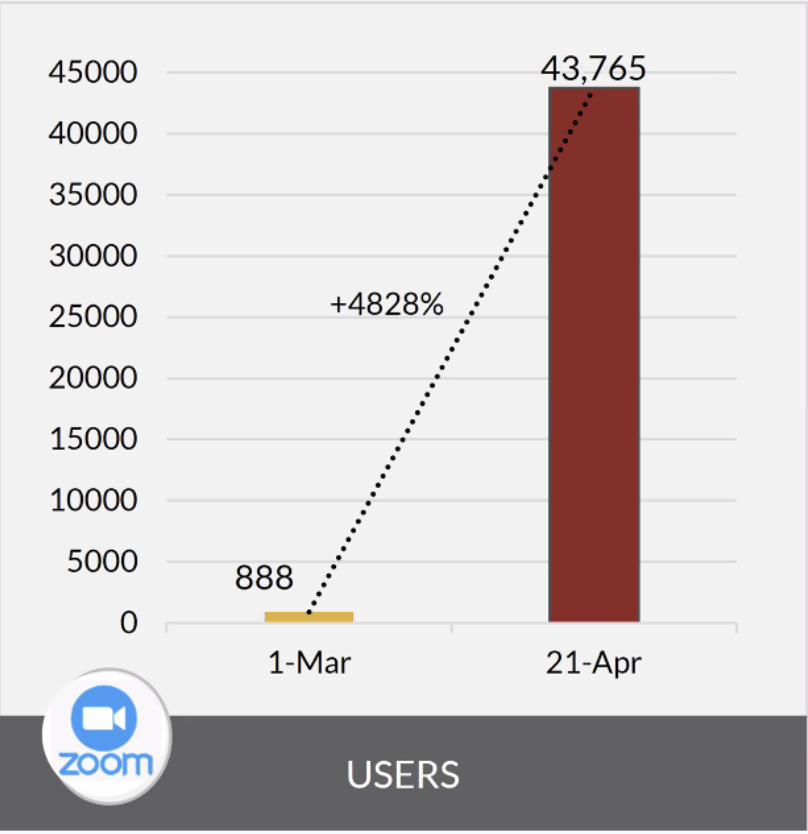
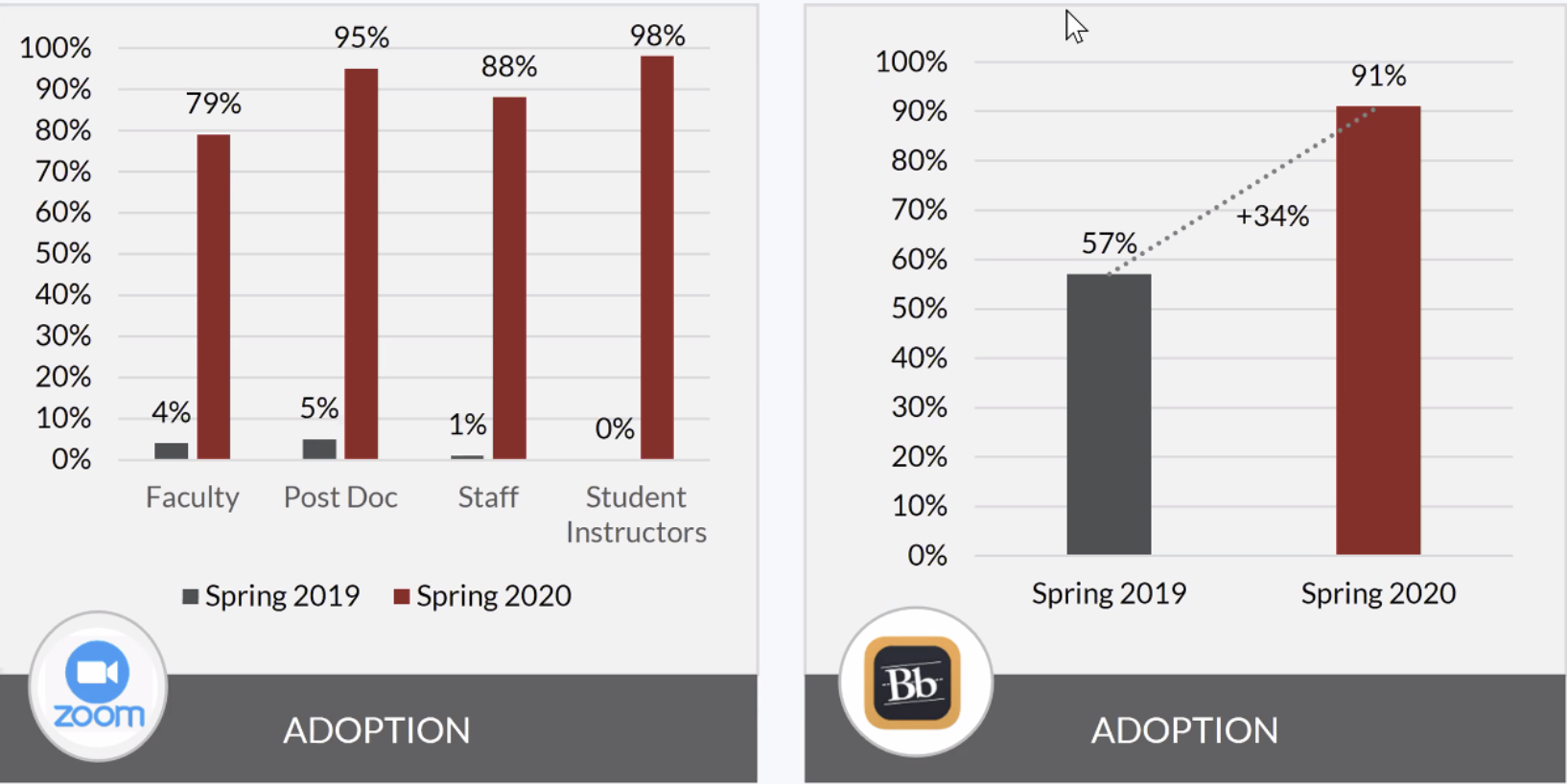
And Beyond
Yes, USC did a lot of heavy lifting in a short amount of time when it came to adopting Zoom for university-wide use. But what does that mean for the future?
“What’s important for us as we start to have these conversations — we no longer think about ‘Oh, our classrooms need to have a camera, our classrooms need to have a microphone.’ … That’s not the direction that will save us in the future. [Focusing only on classroom hardware is] going to increase expenses but won’t necessarily save you from the next time something like this happens.”
Here are Way’s predictions for the next year:
- May 1, 2020 — We’re still spinning our wheels and hoping and praying that we are allowed back on campus by summer or fall.
- August 24, 2020 — We’ll be looking at upgrading more than 200 spaces on campus to become official Zoom Rooms spaces. Some students may not be able to make it back to college by the fall semester. How can we format something that will be a good long-term solution for this? We’ll be figuring it out.
- September 5, 2020 — Football. This is scheduled to be a big game for USC — Trojans at Alabama Crimson Tide. This is the school’s revenue stream. This could be a pivotal moment for live events. “I feel really bad for those who are dealing with the fallout, especially here in Los Angeles, where we’re production-based and live-production-based.” What’s going to happen if, at this first football game of the season, 100,000 people can’t come in person to the coliseum? This is something many colleges will have to prepare for.
- May 14, 2021 — Graduation. Will next year’s graduation be virtual, like this one? “I still believe this next year is just us surviving … We might be rushed to continue to do business [as usual].”
Design and Installation
Will our current operational and technological choices truly define our future practical choices? If so, how? Minor tweaks or blow it all up?
Instead, we should ask:
“Are we going to continue to rely on traditional software services? This is where our design/install has to flip — if we want to be successful in our next generation of AV … It has to transition us to be successful in the future. I even think that’s still a step back, and we need to look even beyond that and move forward from there.”
Four Principles
The point of Way’s goal is this: Recognize the reason for moving to online learning and equipping students, faculty and staff for doing just that.
He gave four principles:
- People — If the university is going to move to cloud services, it’s the people that choice is serving. How can you make things better for them? “If you’re like me, you’re starting to see institutions start posting creative ways to support the people online.”
- Price — Is this some operational expense paid out over time? Is there a way to grow the needs of customers while cutting pricing?
- Procedure — Procedures have to change. “We’re not making house calls, we aren’t sending student workers into classrooms right now, but we are still having classes taught and students are being served but in a different way.
- Purpose — Think about how you’re serving a specific demographic even if you work in the house of worship sector. You’re doing this and changing the way things function because “you care about the people who are there. We’re hoping to bring people back in the fall.”
Areas of Opportunity
Way framed this as thinking about what makes USC special. People like the culture, the traditions, etc. How can they make that translate if the school stays in the online realm in the future?
“You can’t do it from traditional AV ways. We have to be able to think about the more services we can bring up … If bringing the campus to the customer gives us that opportunity to do so, what are those areas of opportunity?”
Way named four key areas:
- Unified and Targeted Communications — Don’t put a camera and a microphone with voice lift technology in a room without targeting who your customers are. Understand their specific needs and meet them at your location when the time comes. “Even when classes come back, sessions and discussion groups don’t need a classroom. Create a culture online. Everything you do has a component that focuses on a person and how they can meet. “
- IT-based Content Transfer Technologies — Classrooms can’t be point-to-point. They have to be point-to-many-point. When students come back, keep them separated on some level. If they come back positive for COVID, have them check into a separate dorm to quarantine and stream classes via network stream — perhaps with decoders in every screen installed in that dorm. Use the technologies you have to connect your people.
- Managed Services (Virtual Help Desk) — A big pain point for Way’s university is that the virtual help desk would have users click a help button that would call the help desk. Now, the trend is changing for it to instead launch a Zoom call with a student worker. “That’s a white-glove service.” Even with budget cuts, many universities are facing, help options don’t have to be sacrificed, according to Way. “The easiest way to cut the budget is to have things not actually end up in the classroom — so we aren’t running all over campus. It’s these types of things that are going to make things much easier.”
- Sustainability and Accessibility — Way invited viewers to run the numbers of a 15-rack AV install in a classroom and then the power requirements of an encoder and decoder to compare. He also noted the last efficiency craze that went through this market — laser projectors. “That was the conversation three years ago, and now we are starting to use components to sustain and be more efficient for institutions.”
Conclusion
Way concluded his keynote with the simple truth: Things are changing. And end users, wherever they may work, are going to have to start thinking about how they can make this push to remote learning, working, etc. as smooth as possible.
Check out our LAVNCH WEEK microsite here to see all the articles (like this one) and public videos from the week and more. And if you’re interested in attending LAVNCH 2.0 the week of June 22 (it’s free to attend!), go ahead and join the list here; spots will fill up fast.



